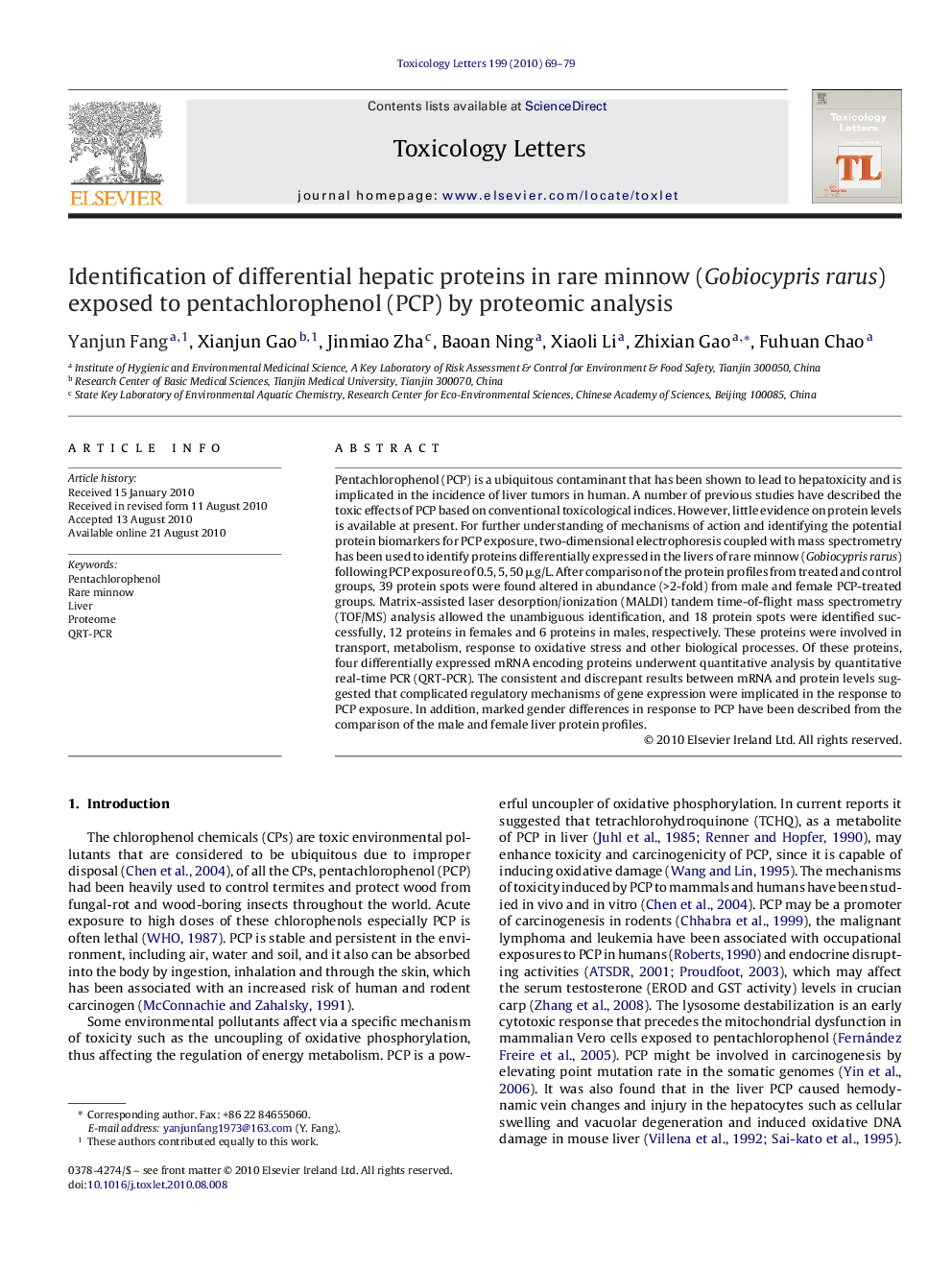| Article ID | Journal | Published Year | Pages | File Type |
|---|---|---|---|---|
| 2600521 | Toxicology Letters | 2010 | 11 Pages |
Pentachlorophenol (PCP) is a ubiquitous contaminant that has been shown to lead to hepatoxicity and is implicated in the incidence of liver tumors in human. A number of previous studies have described the toxic effects of PCP based on conventional toxicological indices. However, little evidence on protein levels is available at present. For further understanding of mechanisms of action and identifying the potential protein biomarkers for PCP exposure, two-dimensional electrophoresis coupled with mass spectrometry has been used to identify proteins differentially expressed in the livers of rare minnow (Gobiocypris rarus) following PCP exposure of 0.5, 5, 50 μg/L. After comparison of the protein profiles from treated and control groups, 39 protein spots were found altered in abundance (>2-fold) from male and female PCP-treated groups. Matrix-assisted laser desorption/ionization (MALDI) tandem time-of-flight mass spectrometry (TOF/MS) analysis allowed the unambiguous identification, and 18 protein spots were identified successfully, 12 proteins in females and 6 proteins in males, respectively. These proteins were involved in transport, metabolism, response to oxidative stress and other biological processes. Of these proteins, four differentially expressed mRNA encoding proteins underwent quantitative analysis by quantitative real-time PCR (QRT-PCR). The consistent and discrepant results between mRNA and protein levels suggested that complicated regulatory mechanisms of gene expression were implicated in the response to PCP exposure. In addition, marked gender differences in response to PCP have been described from the comparison of the male and female liver protein profiles.
